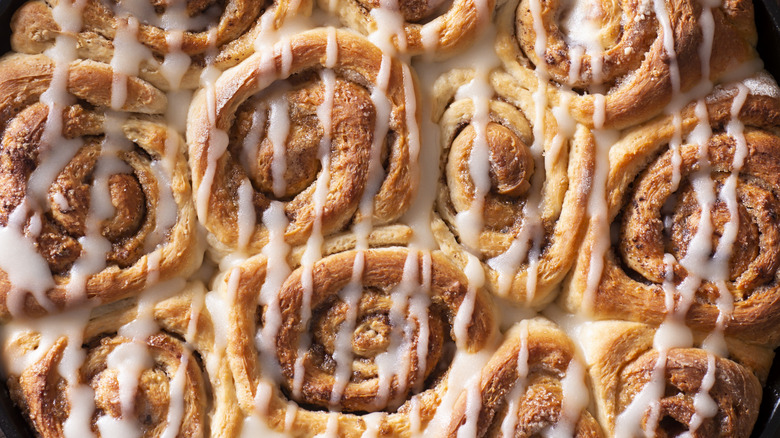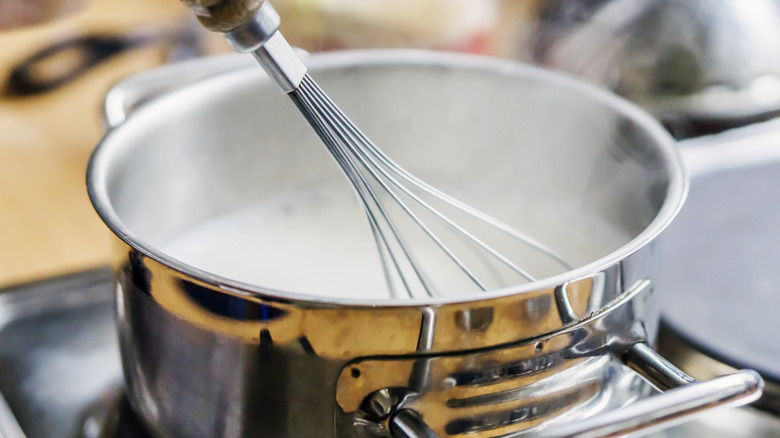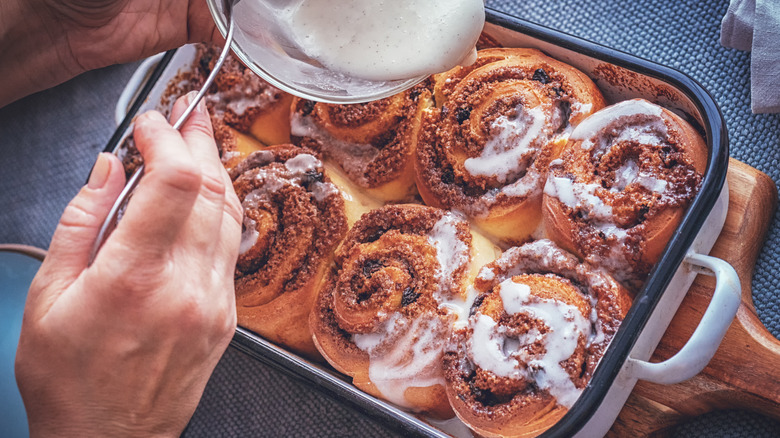The Common Mistake To Avoid For Fluffy, Tender Cinnamon Rolls
When it comes to baked goods, there's nothing quite as comforting as a batch of soft, tender cinnamon rolls. But as any experienced baker will tell you, achieving the perfect texture can be tricky. This is often due to a common mistake that many people make when it comes to baking cinnamon rolls — one that can sabotage all of your hard work and leave you with dry, lackluster rolls.
The truth is that it all comes down to one simple misstep: Overheating your milk. In the pursuit of perfect cinnamon rolls, many bakers get so caught up in the mixing, kneading, and rolling that they forget about the importance of proper milk temperature.
When milk is heated to too high a temperature, the superheated molecules can actually kill off the yeastthat is responsible for making the dough rise and become light and fluffy. Without yeast, your cinnamon rolls will be dense and dry, lacking that oh-so-coveted airiness we all crave.
So, before you start whipping up a batch of cinnamon rolls, take note: The milk should be slightly warm, not hot. Keeping the temperature just right will help activate the yeast and create the perfect fluffy texture that we love. Trust us, it's worth the extra attention to detail. Follow along as we walk you through how to elevate your cinnamon rolls just by paying attention to the milk (and more).
How to properly heat milk for cinnamon rolls
The temperature sweet spot when baking cinnamon rolls that are fluffy, tender, and downright delicious is between 110 and 115 degrees Fahrenheit. This temperature range is optimal because it activates the yeast, which creates the dough's rise, without killing it. Remember, yeast is a living organism that needs the right conditions to thrive.
But how do you measure the heat of milk? If you have a food thermometer, you can put it to work. If not, you can heat 250mL of milk in the microwave for about 45 seconds at medium-high power, stirring every 15 seconds. Alternatively, you can simply heat the milk until it is barely steaming. You might not hit that sweet spot exactly, but it should get you close.
And while we're on the subject of temperature, Shauna Sever, author of "Midwest Made: Big, Bold Baking from the Heartland," told Epicurious that the secret to achieving the fluffiest and most tender baked goods lies in room-temperature ingredients. Adding softened butter to the dough allows for easier incorporation and creates pockets of air during the rising process, resulting in a light, smooth batter.
"Soft but cool butter has a nice, creamy texture that makes it easy to beat with sugar, which incorporates air into batters and doughs," Stella Parks, author of "BraveTart: Iconic American Desserts" said when speaking with Epicurious. She cautioned that adding cold eggs or milk to room-temperature butter can curdle the mix and lead to flat rolls instead of fluffy ones.
Other tips for fluffy, tender cinnamon rolls
While it's no longer a secret that the temperature of your milk can greatly affect the texture of your cinnamon rolls, there are some other tips and tricks that can help ensure that your rolls come out perfectly fluffy every single time.
One key tip for achieving fluffy rolls is to use the Tangzhong method. This technique involves cooking a portion of the flour and milk to a paste-like consistency, which is then added to the dough mixture. The semi-cooked flour starch helps to retain moisture and creates a soft and silky texture.
And speaking of starch, try using bread flour in your next batch of ooey-gooey cinnamon rolls. While most recipes call for all-purpose flour or even cake flour, bread flour contains more gluten, which lends itself to a stretchier, springier texture. It also absorbs more moisture than other types of flour, which ensures your cinnamon rolls will feel light and fluffy, and turn out oh-so-tasty.
Finally, let the dough rise properly. This means giving it enough time to rest and double in size before baking. It can be tempting to rush this process, especially when you're hungry and can't wait to dig in, but patience is key when it comes to baking. If you can, store the dough in the fridge overnight to allow the fermentation process to bring out more robust flavors.
Ready to frost those sweet, swirly rolls and devour them? Use cream cheese frosting for the most flavor.


